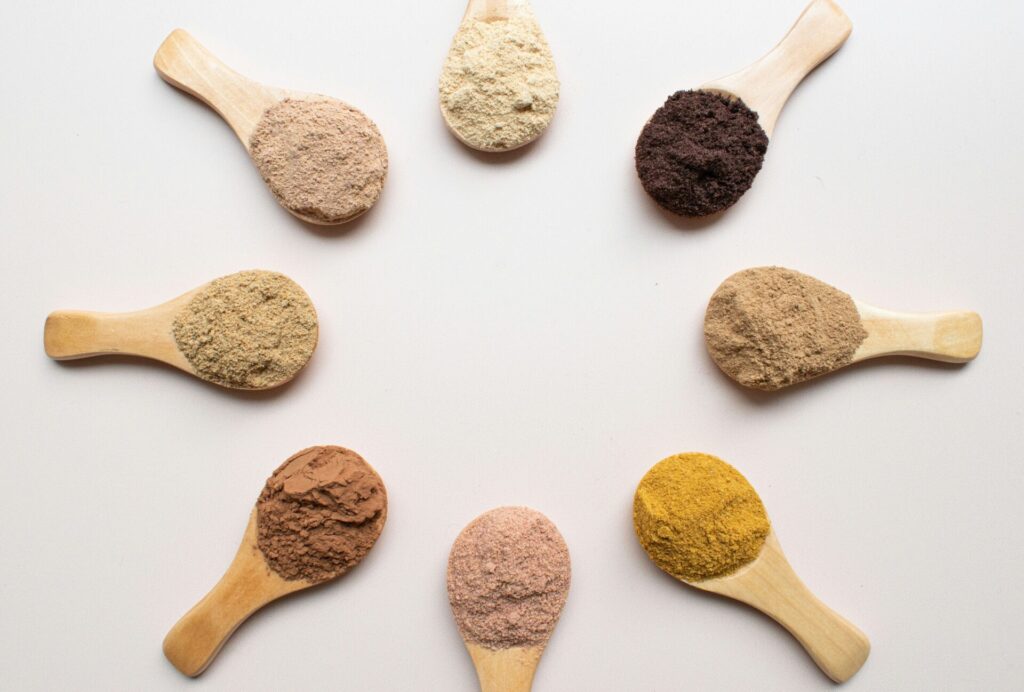Hello BurnFitters!
Can you believe it’s already halfway through January 2024?
Have you kicked off your New Year’s resolutions, and more importantly, how much progress have you made?
I bet that ‘getting in shape’ is on your list, which is probably why you’re reading this.
Today, I’m going to discuss how to get in shape within 3 months.
You might think three months isn’t enough time to transform your body, and you might be right, especially if you’re starting from scratch. But remember, even if you don’t achieve your ideal physique in three months, maintaining consistent and persistent efforts will set you on the right path.
Stay committed for a bit longer, and you’ll reach your goals. After all, if you’ve been out of shape for a while, it’s only fair to acknowledge you’ve had your share of fun, right?

Understanding the Basics of Fitness Transformation
Getting in shape within three months is a realistic and achievable goal if approached correctly. It’s not just about losing weight or gaining muscle; it’s a holistic journey involving your diet, exercise regimen, mindset, and lifestyle. This journey requires a clear understanding of the basics: what does it mean to get in shape, and what fundamental principles do you need to follow?
Setting Realistic Goals
Setting goals is the first step in your fitness transformation. Recognize that a three-month period may feel fleeting or extensive depending on one’s perspective of physical transformation. It’s vital that your objectives adhere to the SMART criteria – Specific, Measurable, Attainable, Relevant, and Time-bound. Within the span of ninety days, aspire to set tangible milestones such as shedding a precise number of pounds, elevating your stamina, or reaching a new tier of muscular power.
It’s crucial to ground your expectations in reality. Anticipating the shedding of weight accrued over a decade within a mere quarter of a year is impractical. There exists no alchemical solution; rather, success is the fruit of consistent, disciplined effort.

Designing a Nutrient-Rich Eating Blueprint
At the heart of physical transformation is nutrition. Crafting a diet that aligns with your fitness goals is fundamental, requiring a thoughtful balance of macronutrients: carbohydrates for energy, proteins for muscle repair and growth, and fats for hormone production and cellular function. Prioritize whole foods that are nutrient-packed to power your body and support recovery. Commit to a disciplined dietary regimen for the upcoming three months—eliminate alcohol and avoid processed foods.
Delving into Macronutrients and Caloric Balance
Macronutrients lay the foundations of your nutritional intake. Each has a distinct function: carbohydrates are your primary energy source, proteins support muscle repair and growth, and fats are essential for hormonal balance and cellular integrity. Mastering the art of macronutrient balance is a cornerstone of your fitness journey.
The Role of Hydration in Fitness
Hydration is a key, yet sometimes neglected, aspect of fitness. Water is instrumental in digestion, maintaining joint health, and the transportation of nutrients. It’s imperative to maintain optimal hydration levels throughout the day, particularly before, during, and after physical exertion.

Enhancing Weight Loss with Cardiovascular Workouts
Cardiovascular activities excel in expending calories and fortifying cardiac health. Diverse exercises like jogging, biking, aquatic activities, or energetic walks can be seamlessly integrated into your fitness plan. The essence lies in selecting a cardio exercise that resonates with your preferences and lifestyle, ensuring longevity and consistency in your regimen.
Cultivating Muscle Definition through Strength Training
While cardio is a potent tool for fat reduction, strength training is pivotal for sculpting muscle and optimizing body composition. This includes a spectrum of activities from lifting weights to calisthenics, or engaging in resistance training. Its benefits transcend aesthetic enhancement, bolstering muscle strength and amplifying your basal metabolic rate.
Incorporating Flexibility and Mobility into Your Routine
Flexibility and mobility exercises, while often overlooked, are crucial for a comprehensive fitness strategy. Practices such as yoga, systematic stretching, or Pilates not only augment your flexibility but also decrease injury risk and support muscular recuperation. Integrating these disciplines will ensure a balanced approach to your physical health and performance.
Using Fitness Trackers and Apps
To stay on track, consider using fitness trackers or apps like BurnFit. 🙂 we help monitor your progress, track your workouts, and even provide guidance and motivation. These tools can be instrumental in ensuring you’re moving towards your goals.
Adapting to Plateaus
It’s common to hit a plateau in your fitness journey. When progress stalls, it’s important to reassess your diet and exercise plan. Sometimes, minor adjustments can reignite progress.

Cultivating a Positive Attitude
Your mindset plays a significant role in getting in shape. A positive attitude helps in staying motivated and overcoming challenges. Focus on self-affirmation and celebrating small victories.
Mental barriers like lack of motivation, self-doubt, or fear of failure can hinder progress. Overcoming these involves setting realistic expectations, seeking support from a community or coach, and focusing on the bigger picture of health and wellness
Maximizing Rest for Muscle Regeneration
Adequate sleep is fundamental for muscle recovery and maintaining peak overall health. Aspiring for 7-9 hours of restful sleep nightly is pivotal, as it contributes significantly to muscle repair, body weight regulation, and mental health enhancement. During sleep, the body undergoes numerous restorative processes, including the release of growth hormones crucial for tissue repair and growth, reinforcing the importance of a consistent and quality sleep cycle.
Integrating Active Recovery Strategies
Active recovery is an essential complement to sleep for muscle healing. Engaging in light physical activities, such as low-intensity aerobic exercises, stretching routines, or using self-myofascial release tools like foam rollers, can expedite the recovery process. These activities boost circulation, thus providing muscles with essential nutrients for repair and aiding in the elimination of metabolic by-products. Incorporating these methods, particularly after intense workouts, can alleviate muscle tightness and soreness, paving the way for a smoother recovery trajectory.
Holistic Approach to Recovery
For a holistic recovery, it’s important to address nutrition and hydration as they are integral to the muscle repair process. A diet rich in protein, omega-3 fatty acids, and antioxidants supplies the necessary components for muscle synthesis and recuperation. Hydration also plays a crucial role, as water is involved in all physiological recovery processes. Establishing a regular sleep routine can stabilize your circadian rhythm, enhancing sleep quality and, by extension, recovery efficacy. In unison, these elements—rest, active recovery, nutrition, and hydration—forge a comprehensive approach, fostering improved performance and a robust, agile physique.

Supplementing Fitness Nutrition
While your nutrition should primarily come from a well-rounded diet, supplements such as protein powders, branched-chain amino acids (BCAAs), or multivitamins can be beneficial adjuncts to your fitness regimen. These supplements can help fill nutritional gaps, support muscle recovery, and enhance performance. It’s crucial, though, to make informed choices. Understanding each supplement’s purpose and how it complements your diet is vital to ensure that your supplement strategy aligns with your health and fitness objectives.
Discerning the Role of Supplements
Supplements should not replace whole foods but rather serve to augment your diet. A protein powder can be a convenient post-workout option, BCAAs may aid in muscle recovery during and after exercise, and multivitamins can provide a safety net for your micronutrient needs. Each has a specific role and, when used correctly, can support your efforts towards achieving fitness goals. Knowledge about the appropriate timing and dosage is also key to maximizing the benefits of supplementation.
Consultation and Research on Supplements
The market is saturated with supplement products, each promising significant health and fitness benefits. However, it’s imperative to navigate this landscape with a discerning eye. Many claims are not substantiated by robust scientific evidence, and some products may not be necessary for everyone. Research and professional guidance are indispensable. Consulting with a healthcare professional can provide clarity on which supplements are appropriate for your unique needs, considering your dietary habits, fitness routine, and health status.
A 3-Month Fitness Plan Overview
For a successful three-month transformation, it is crucial to have a structured plan that synergizes diet, exercise, and lifestyle changes. This plan needs to be flexible, allowing for regular check-ins to monitor your progress and make any necessary adjustments. Incorporating both weekly and monthly milestones, such as enhancing your running time each week or increasing your lifting weight each month, can keep you motivated and on track. It’s also important to anticipate common obstacles like time constraints, fluctuating motivation levels, or hitting plateaus. Early identification of these challenges and having strategies to overcome them is key to maintaining consistency in your fitness journey.
In addition to setting and meeting milestones, it’s vital to develop strategies to stay on track. This could include meal prepping, scheduling your workouts, or becoming part of a fitness community for support and accountability. Recognizing and celebrating every achievement, big or small, boosts morale and encourages continued effort. Remember, getting in shape in three months is just the starting point. The overarching goal is to embrace a sustainable lifestyle that perpetuates your fitness levels, involving ongoing balanced nutrition, regular exercise, and a mindset geared towards long-term health and wellness.

Conclusion.
In wrapping up, remember that your three-month fitness journey is just the beginning of a more significant, lifelong commitment to health and well-being. The strategies and habits you develop now – from setting milestones and meal prepping to joining fitness communities for support – are not just for achieving short-term goals. They are the building blocks for a sustainable lifestyle that prioritizes balanced nutrition, regular exercise, and a mindset focused on long-term health.
Celebrate every step forward, no matter how small, and keep in mind that each effort brings you closer to a healthier, more fulfilled version of yourself. Your journey to fitness is a continuous path, one that evolves and grows with you, offering endless opportunities for improvement and well-being.



